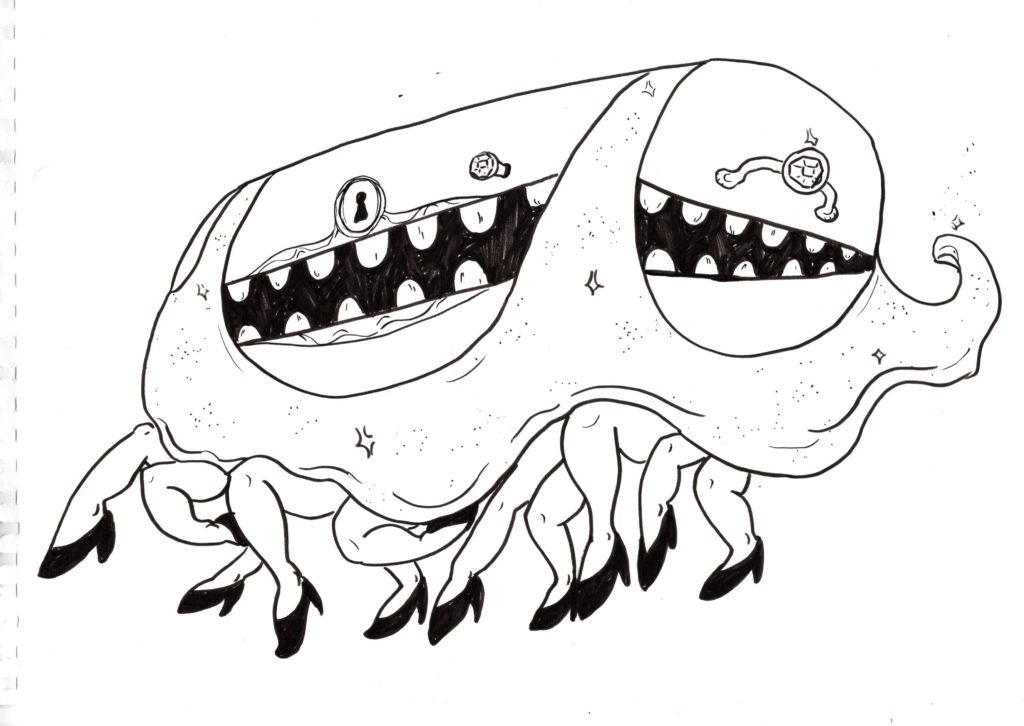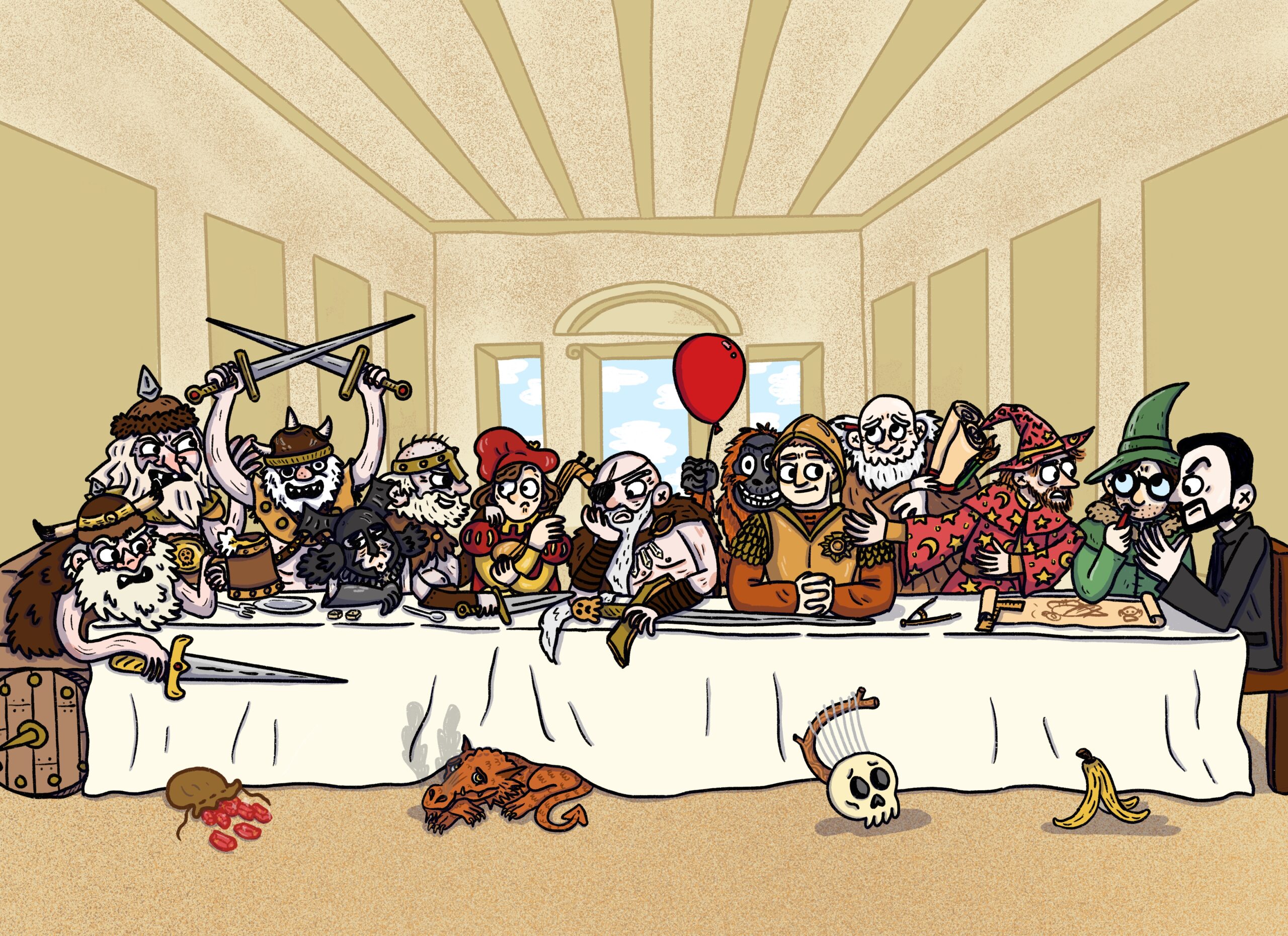#Pratchat14 – City-State Lampoon’s Disc-wide Vacation
In episode fourteen we celebrate 35 years of the Discworld by going all the way back to the beginning! Writer and podcaster Joel Martin joins us for a bumper A’Tuin-sized discussion of the very first Discworld story, adventure, chronicle, tale…Terry Pratchett’s The Colour of Magic, published in 1983!
Rincewind, a wizard unable to cast spells, makes a living of sorts in the mighty city of Ankh-Morpork through his gift for languages. But his gift gets him more than he bargains for when he becomes the guide to the Discworld’s first tourist. Fresh off the boat from the distant and obscenely wealthy Counterweight Continent, naïve Twoflower has come armed with a phrasebook, a demon-powered picture box and his magical Luggage full of enormous gold coins, determined to see the barbarians, brawls and beasts he’s read about in stories back home. But seeing them is the easy part – surviving to talk about them is another matter entirely…
Though we’ve often talked about the differences between the earliest books and those that came later, The Colour of Magic introduces Ankh-Morpork, Rincewind, Death and of course Great A’Tuin and the Disc itself with varying degrees of familiarity. Split into four sections – The Colour of Magic, The Sending of Eight, The Lure of the Wyrm and Close to the Edge – it manages to be both homage and parody of multiple beloved fantasy genres, while at the same time trying to establish its world – and author – as something new. Do you think it succeeds? Did you start at the start? Use the hashtag #Pratchat14 on social media to join the conversation and tell us! We’d also love to see some fan art of the Luggage based directly on the text, rather than Kirby’s ubiquitous, fleshy baby-legged version.
Podcast: Play in new window | Download (Duration: 2:23:41 — 65.9MB)
Guest Joel Martin is a fantasy author whose several novellas and novels include his own take on classic sword-and-sorcery, The Broken World (whose protagonist is not Kane, but Karn). For more about him and his work, visit his web site, thepenofjoel.com, or follow him on Twitter at @thepenofjoel. He also hosts the writing discussion podcast The Morning Bell with Luke Manly and Ian Laking; find it at themorningbell.com.au.
You can find full show notes and errata for this episode on our web site.
This is our final episode for the Year of the Justifiably Defensive Lobster (aka 2018), but we’ll be back in January, when we’ll fire up Queen’s Greatest Hits and kick off proceedings with one of Pratchett’s most celebrated novels: Good Omens! Yes, we’re getting in to cover Pratchett’s collaboration with Neil Gaiman before said co-author and Amazon Prime bring their version to subscribers’ screens in 2019. (Don’t worry, it’ll be on the BBC at some point too.) With twice the authors, we’re expecting twice the questions (though we’ll try and stick to our usual running time of under two hours), so send them in via social media using the hashtag #Pratchat15.
Want to help us get to the end of our six(ish) year mission and read every Pratchett book – and more? You can support us with a tip, or a subscription for as little as $2 a month, and that’s cuttin’ our own throats! See our Support Us page for details.












